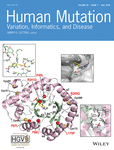Journal list menu
Export Citations
Download PDFs
Cover Image, Volume 39, Issue 7
- Page: i
- First Published: 11 June 2018

On the cover: This cover image, by Lorena Tremiño et al., is based on the Research Article Insight into vitamin B6-dependent epilepsy due to PLPBP (previously PROSC) missense mutations, Pages 1002-1013. DOI: 10.1002/humu.23540.
MERTK mutation update in inherited retinal diseases
- Pages: 887-913
- First Published: 16 April 2018
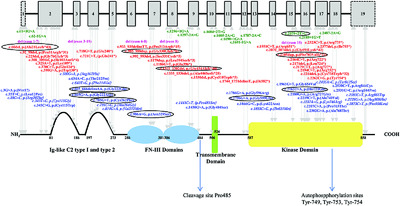
We provide a mutation update for MER tyrosine kinase (MERTK) which encodes a surface receptor localized at the apical membrane of the retinal pigment epithelium critical for photoreceptor outer segment phagocytosis. A total of 79 variants have been identified underlying inherited retinal diseases of which 11 are reported for the first time. Altogether, mutations in MERTK account for ∼2% of IRD cases with a severe retinal phenotype. These data are important for current and future therapeutic trials including gene replacement therapy or cell based therapy.
MECP2 variation in Rett syndrome—An overview of current coverage of genetic and phenotype data within existing databases
- Pages: 914-924
- First Published: 27 April 2018
Seshat: A Web service for accurate annotation, validation, and analysis of TP53 variants generated by conventional and next-generation sequencing
- Pages: 925-933
- First Published: 25 April 2018
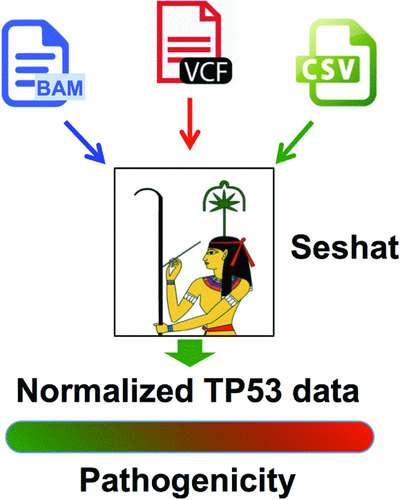
Seshat is a novel portal dedicated to the specific annotation of TP53 variants based on the UMD_TP53 database (http://p53.fr/tp53-database/seshat). The various features of the portal are as follows: (1) importation of variant data from multiople format (VCF, BAM or CSV) (2) annotation of variants and statistical analyses based on the UMD_TP53 database; and (3) generation of output tables with accurate nomenclature, as well as TP53-specific information such as pathogenicity or frequency in various types of cancer.
Abnormal function of the UBA5 protein in a case of early developmental and epileptic encephalopathy with suppression-burst
- Pages: 934-938
- First Published: 16 April 2018
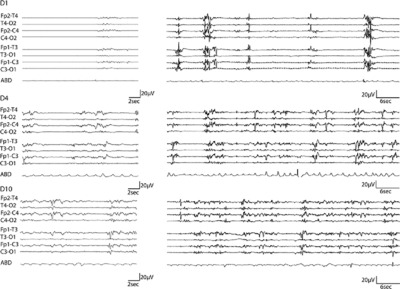
We identified a homozygous missense variant in the UBA5 gene in a patient with early myoclonic epilepsy (EME), the most severe epileptic syndromes affecting neonates. We showed that the mutation severely affect protein function. These findings underline the critical role of UBA5 for normal neuronal networks activity and provide a new molecular cause to EME.
Marker chromosome genomic structure and temporal origin implicate a chromoanasynthesis event in a family with pleiotropic psychiatric phenotypes
- Pages: 939-946
- First Published: 25 April 2018
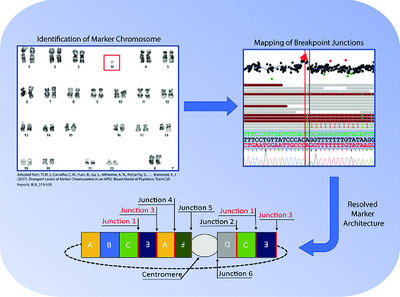
Small supernumerary maker chromosomes (sSMC) are chromosomal fragments difficult to genomically characterize. In a familial sSMC that segregates with pleiotropic psychiatric phenotypes we used multiple genomic technologies to identify and fine map structural variants, determine the breakpoint junctions, and delineate the precise architecture of this sSMC.
Genome sequencing reveals a novel genetic mechanism underlying dihydropyrimidine dehydrogenase deficiency: A novel missense variant c.1700G>A and a large intragenic inversion in DPYD spanning intron 8 to intron 12
- Pages: 947-953
- First Published: 24 April 2018
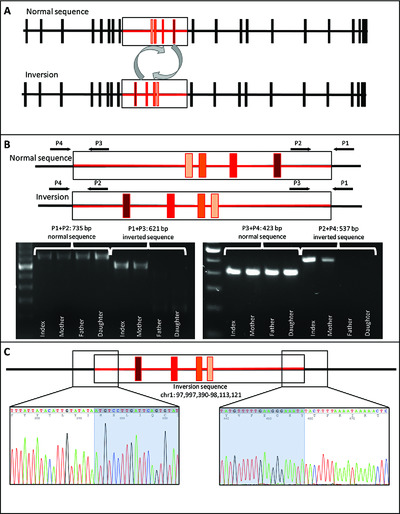
Dihydropyrimidine dehydrogenase (DPD) deficiency is associated with a variable clinical presentation. In a family with three DPD deficient patients presenting with unusual clinical phenotypes a novel missense variant c.1700G>A (p.G567E) was observed and for the first time, a large intragenic inversion in DPYD spanning intron 8 to intron 12. Thus, in patients with an inconclusive genotype or unusual clinical phenotype the presence of an inversion in DPYD should be considered as a genetic cause underlying the deficiency.
NGS testing for cardiomyopathy: Utility of adding RASopathy-associated genes
- Pages: 954-958
- First Published: 25 April 2018
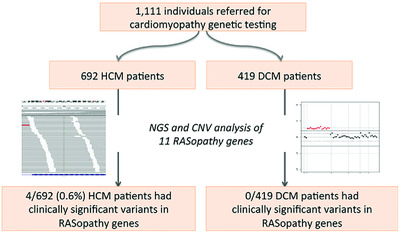
To determine the utility of adding RASopathy-associated genes to cardiomyopathy panels, we tested 11 RASopathy-associated genes in 1,111 individuals referred to genetic testing for hypertrophic or dilated cardiomyopathy. Disease-causing variants in PTPN11, SOS1, and BRAF genes were identified in 0.6% (4/692) of individuals with hypertrophic cardiomyopathy, with ∼3 variants of uncertain significance (VUS) per 100 cases. Our results demonstrate that adding RASopathy-associated genes to cardiomyopathy panels will increase the clinical utility without significantly increasing the number of VUSs per case.
Clinical and functional characterization of two novel ZBTB20 mutations causing Primrose syndrome
- Pages: 959-964
- First Published: 07 May 2018
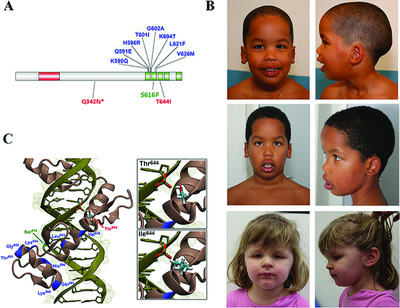
Primrose syndrome is a rare disorder characterized by macrocephaly, tall stature, intellectual disability, autistic traits, and disturbances of glucose metabolism with insulin-resistant diabetes and distal muscle wasting occurring in adulthood. The disorder is caused by functional dysregulation of ZBTB20, a transcriptional repressor controlling energetic metabolism and developmental programs. Here, we characterize clinically and functionally the first truncating mutation [(c.1024delC; p.(Gln342Serfs*42)] and missense change affecting the third zinc-finger motif of the protein [(c.1931C>T; p.(Thr644Ile)], providing evidence of a dominant negative role of both mutations.
Partial loss-of-function of sodium channel SCN8A in familial isolated myoclonus
- Pages: 965-969
- First Published: 03 May 2018

We report a heterozygous SCN8A variant, p.Pro1719Arg in a pedigree containing five family members affected with autosomal dominant isolated myoclonus without seizures or cognitive impairment. Functional analysis demonstrated greatly reduced Nav1.6 channel activity. This study expands the phenotypic and functional spectrum of SCN8A variants. SCN8A is a candidate gene for isolated movement disorders without seizures.
Unusual association of a unique CAG interruption in 5′ of DM1 CTG repeats with intergenerational contractions and low somatic mosaicism
- Pages: 970-982
- First Published: 17 April 2018

Myotonic dystrophy type 1 is a dominant multisystemic disorder caused by an unstable CTG repeat expansion that usually increases in successive generations and tissues. We described an unique CAG interruption or multiple CCG interruptions in the 5' end of the CTG repeat tract in two atypical DM1 families. We showed that these interruptions are associated with maternal intergenerational contractions and low somatic mosaicism in blood.
Whole-genome sequencing in patients with ciliopathies uncovers a novel recurrent tandem duplication in IFT140
- Pages: 983-992
- First Published: 24 April 2018
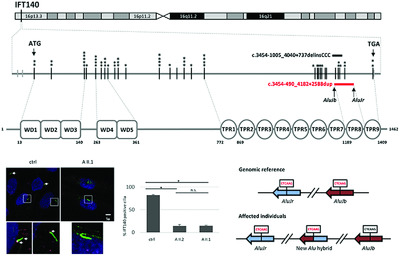
Mutations in the IFT140 gene are implicated in a variety of phenotypes ranging from isolated retinis pigmentosa to more syndromic ciliopathies. Using whole genome sequencing we identified a novel recurrent tandem duplication (from exon 27 to 30, 6.7 kb) that was missed by whole exome sequencing. Among several hundreds of patients with a ciliopathy phenotype, biallelic mutations were identified in 11 families representing 12 pathogenic variants. 8 families carried with the exact same tandem duplication (at the homozygous or heterozygous state).
Novel CASK mutations in cases with syndromic microcephaly
- Pages: 993-1001
- First Published: 24 April 2018

We identified four novel CASK mutations in individuals with syndromic microephaly. To understand the functional consequences of the different point mutations on the development of microcephaly and cerebellar defects, we established a transient loss-of-function zebrafish model, and demonstrate recapitulation of relevant neuroanatomical phenotypes. Furthermore, we utilized in vivo complamentation studies to demonstrate that the three point mutations tested confer a loss-of-function effect, thus endorsing zebrafish as a tractable model to assess the effect of novel CASK variants on brain development.
Insight into vitamin B6-dependent epilepsy due to PLPBP (previously PROSC) missense mutations
- Pages: 1002-1013
- First Published: 24 April 2018
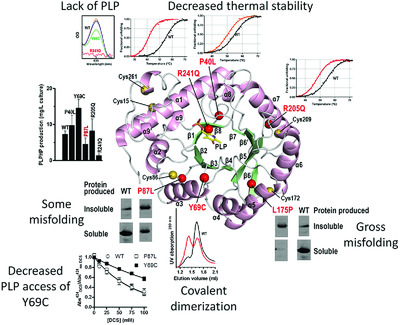
The impact of missense mutations affecting protein PLPBP (previously known as PROSC) found in patients with vitamin B6-dependent epilepsy has been assessed using the recombinantly produced human protein. A structural model of this pyridoxal phosphate (PLP) binding protein, derived from bacterial structures, particularly of cyanobacterial protein PipY, have allowed structural rationalization of the mutations' effects. These effects largely affect protein folding and/or stability, although one mutation prevented PLP binding and another one caused covalent dimer formation and reduced PLP accessibility. The possibility of using pharmacochaperone therapy is raised.
De novo mutations in the SET nuclear proto-oncogene, encoding a component of the inhibitor of histone acetyltransferases (INHAT) complex in patients with nonsyndromic intellectual disability
- Pages: 1014-1023
- First Published: 24 April 2018
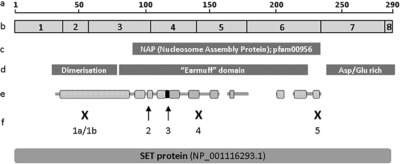
We describe de novo mutations in the SET gene as a novel cause for a non-syndromic form of intellectual disability (ID). Four patients plus an affected mother and son were identified, who harboured mutations that affected all known transcripts of the SET gene. The SET protein interacts with numerous proteins involved in histone modification, including proteins encoded by known autosomal dominant ID genes, i.e. EP300, CREBBP, SETBP1, KMT2A, RAC1 and CTCF and it is the first member of the “Nucleosome Assembly Protein” family to be linked to ID.




